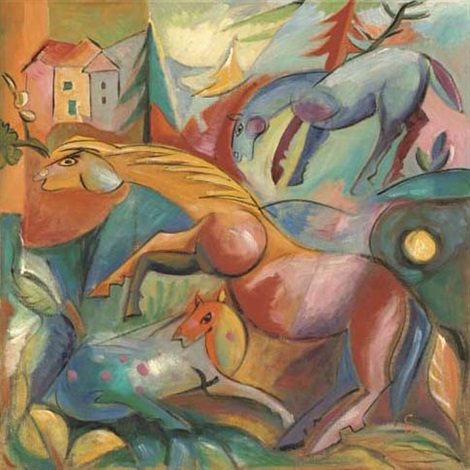Dokumentary
Noteabel cases:
In 1987 Loretto Molzahn, widow of Johannes Molzahn, paid a Berlin dealer DM60,000 for a portrait her husband had painted in 1930 of Oskar Schlemmer. The dealer had acquired the painting from Wolfgang Fischer. The painting proved to be fake and the Berlin dealer was given a suspended sentence in 1998.

In 2012, Bouquet varié (mixed bouquet), purportedly a 1937 painting by Moïse Kisling, was listed by French auctioneers Millon to be auctioned in Dubai on 22 October 2012, with an estimate of $150,000–200,000. As its provenance were listed Sammlung Jägers, Köln, Sammlung Beltracchi, Palma, and an auction on 23 March 1994 at Sotheby's in London. The painting was withdrawn from auction when questions were raised about its authenticity. When asked about the painting, Beltracchi commented he "had painted many bouquets of flowers during his life".

In 2004, Beltracchi and his associates sold La Forêt (2), a fake 1927 Max Ernst oil painting, after Werner Spies had appraised it and had issued a certificate of authenticity. He then put Wolfgang's wife Helene in touch with Swiss art dealer Yves Bouvier, best known for the Bouvier Affair, who then sold the painting to investment firm Salomon Trading for €1.8 million. Galerie Cazeau-Béraudière lent it to the Max Ernst Museum for a 2006 exhibition and subsequently sold it to collector Daniel Filipacchi for $7 million. The painting is now listed as a forgery from the Sammlung Jägers and is one of the five Max Ernst paintings Beltracchi admitted to forging during the 2011 trial.

In early 2006, Otto Schulte-Kellinghaus tried, unsuccessfully, to sell this painting via Parisian art dealers. Together with a forged André Derain painting, it was taken to Kunstmuseum Ahlen in July 2009 where it was shown to prospective customers, including Christie's, which rejected it. Provenance of the painting was the fictional Sammlung Jägers. A deal was being negotiated to sell the painting for €5.8 million to an unknown buyer, when it was seized in the museum by police 25 August 2010. It is one of the fourteen paintings Beltracchi admitted to forging.

In July 2004 Steve Martin paid Paris gallery Cazeau-Béraudière €700,000 for Landschaft mit Pferden (Landscape with horses), supposedly painted by Heinrich Campendonk in 1915. In February 2006 Martin sold the painting through Christie's to a Swiss businesswoman for €500,000. The painting is now listed as a forgery from the Sammlung Jägers and is one of the fourteen paintings Beltracchi admitted to forging.

In November 2006, Beltracchi and associates sold Rotes Bild mit Pferden (Red Picture with Horses), supposedly a 1914 painting by Heinrich Campendonk, to Trasteco, a Maltese company, for €2.88 million through Lempertz auctioneers in Cologne. "Rotes Bild mit Pferden" was found to be fake by Artvera's gallery, based in Switzerland. In 2008, a scientific analysis showed the painting contained titanium white, which was not yet available in 1914. Experts identified old gallery labels on the back of the painting as fake. The painting is now listed as a forgery from the Sammlung Jägers and is one of the fourteen paintings Beltracchi admitted to forging. Trasteco sued for damages, and 28 September 2012 a court in Cologne ruled in its favor: Lempertz was to reimburse Trasteco the full amount. Lempertz announced it would appeal. In December 2012, the case was settled, with some of Beltracchi's real estate being sold to repay Trasteco €2 million. Lempertz reimbursed Trasteco its €800,000 sales commission as well as some additional costs. This is the first instance of Beltracchi's refunding a buyer of one of his forgeries.

